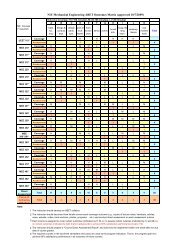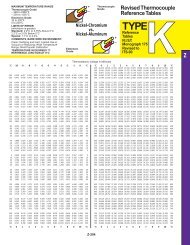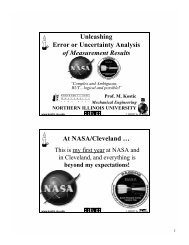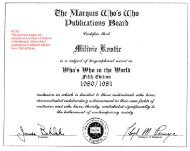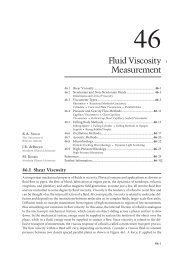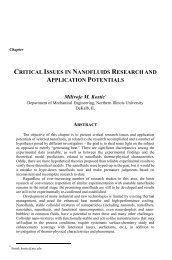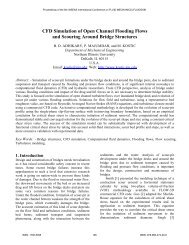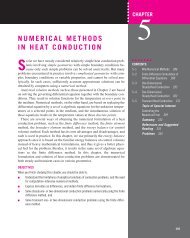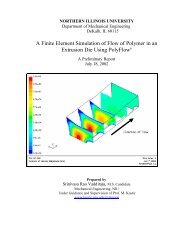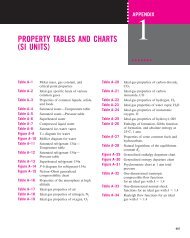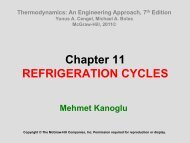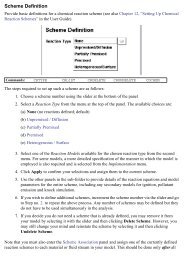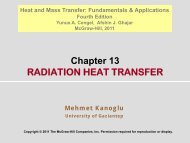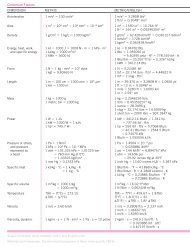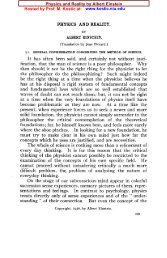Design of Extrusion Dies - Kostic - Northern Illinois University
Design of Extrusion Dies - Kostic - Northern Illinois University
Design of Extrusion Dies - Kostic - Northern Illinois University
Create successful ePaper yourself
Turn your PDF publications into a flip-book with our unique Google optimized e-Paper software.
640 <strong>Design</strong> <strong>of</strong> <strong>Extrusion</strong> <strong>Dies</strong><br />
Preland plate: imparts significant flow adjustment<br />
by reducing thickness in high-flow areas and increasing<br />
thickness in low-flow areas anticipated downstream in<br />
the die land to make flow more uniform.<br />
Die land plate: provides a uniform cross-section<br />
passage that is typically 10 times longer than the<br />
thickness <strong>of</strong> the extrudate to relax the viscoelastic<br />
stresses in the melt before leaving the die (reduces<br />
die swell) and forms the shape <strong>of</strong> the extrudate leaving<br />
the die. The die land pr<strong>of</strong>ile has the required<br />
shape to compensate for extrudate deformation<br />
after the die (die swell and drawdown) and yield<br />
the desired shape downstream.<br />
The die exit pr<strong>of</strong>ile shown in Fig. 7 creates an<br />
extrudate that is a U-shaped pr<strong>of</strong>ile with three sides<br />
<strong>of</strong> uniform thickness and perpendicular walls to the<br />
bottom surface. The irregular shape <strong>of</strong> the die exit<br />
was generated with the aid <strong>of</strong> CFD as outlined in the<br />
section Modern <strong>Design</strong> Simulation and Computational<br />
Tools later in this entry.<br />
COEXTRUSION DIES<br />
Fig. 5 Irregular die shapes<br />
required for regular extrudates.<br />
Another important product made with extrusion dies is<br />
the creation <strong>of</strong> multilayered materials. Multilayered<br />
sheet and film materials have two applications:<br />
Making more economical material by sandwiching<br />
a less costly core material between two more expensive<br />
materials.<br />
Fig. 6 Examples <strong>of</strong> poor (on left) and improved<br />
extrusion product designs (on right) to achieve<br />
uniform product thickness: (1) pr<strong>of</strong>ile (A) made<br />
into a hollow pr<strong>of</strong>ile and (2) pr<strong>of</strong>ile (B) made into<br />
an open pr<strong>of</strong>ile.



